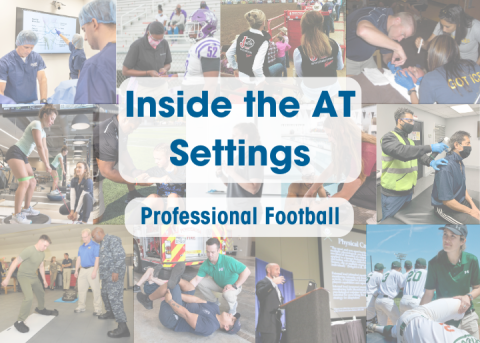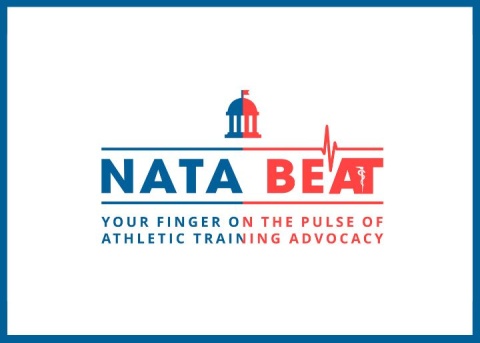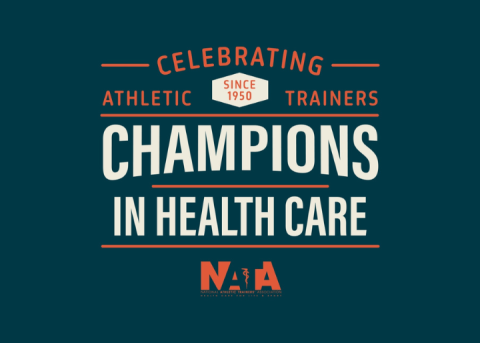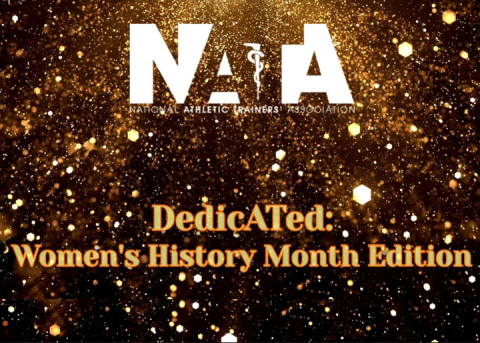
Introduced in the April NATA News, this NATA Now article series provides insight into the different athletic training settings as well as information athletic training students and interested ATs need to know. The series also provides tips from members on how to succeed in each setting.
For 15 years, Seattle Seahawks head athletic trainer David Stricklin, MS, LAT, ATC, has provided care to professional football athletes.
“I was exposed to professional football through summer and seasonal internships,” he said. “I left the Seahawks in 2005, after a season-long internship, and worked at Oregon State for four years prior to being invited back as a full-time staff member in 2010.”
Continue reading as Stricklin shares insight into the professional football setting.
Typical Makeup of Your Population
We work with professional football players, staff and coaches, age range 20 to 80 years old with various backgrounds.
Non-AT-Related Skills/Education/Certification Required or Helpful for Your Setting
Athletic training is a multi-disciplinary profession. From a skills and education aspect, I would say that every professional certification or training that one can do in the sports medicine field is related to athletic training. I have taken a wide range of continuing education/certifications over the past 15 years from functional range conditioning to functional soft tissue transformation. Recently, Brad Schoenfeld, PhD, CSCS, taught our staff a course on muscle hypertrophy, which we will apply to our long-term rehabilitations and our strength and conditioning staff will apply to off-season and in-season training.
Common Injuries Observed or Encountered in Your Setting
Professional football is plagued by lower extremity soft tissue injuries, specifically hamstring and groin strains. As violent as the sport is, by far, the most exposures to injuries come during practice where skill players like wide receivers and defensive backs run at high speeds. While these injuries do not boast the longest time-loss per incident, cumulatively, they’re responsible for the most players missing time and are highly susceptible to reinjury. We, of course, are expected to be able to assess, treat and rehabilitate injuries as simple finger joint sprains to complex quadriceps tendon ruptures. Additionally, in this environment, we can help manage a wide range of other, nonorthopedic conditions that occur over the wide age range of people who we care for.
Traits of a Successful AT in Your Setting
Being process oriented, progressive, collaborative, authentic and resourceful. You will find that these traits, along with an unrelenting work ethic, will take you far in any profession.
Misconceptions About Your Setting and/or Patient Population
This isn’t “Ballers” or “Any Given Sunday.” Our players are not all multi-millionaires nor are the staff who work in the building. The men who we care for, more often than not, are dads and husbands. The stress of this environment is palpable because people’s livelihoods hinge on a combination of job performance, wins and losses, public perception and other circumstances that are not in our control. Additionally, the best medical staff in the NFL could be working for an 0-17 team. One must be careful how they measure their success in professional sports.




